If you’re looking for a way to transform your small apartment into a space that’s full of personality, functionality, and tranquility, Japanese style might be the perfect choice. This decorating style, with its roots in a rich and ancient culture, is known for its minimalist design and its ability to maximize limited spaces. By incorporating elements of Japanese style, you can not only create a more beautiful and organized home, but also a space that promotes well-being and serenity.
Understanding the Essence of Japanese Style
The Japanese style of decorating is more than just an aesthetic choice; it is a philosophy of life that reflects the culture and needs of a country where space is at a premium. With densely populated cities and small apartments, the Japanese have developed a unique approach to interior design, focused on creating spaces that are both functional and pleasant.
1. The Philosophy of “Less is More”
At the heart of Japanese style is the concept of minimalism. In a world where we are constantly bombarded with visual and material stimuli, Japanese style invites us to adopt a more calm and focused mindset.

- Conscious detachment: Before you start decorating, it’s important to do a complete review of what you really need. Detachment is essential to creating a space that breathes tranquility.
- Minimalist organization: Adopt the “a place for everything” practice, using built-in shelves, cabinets and hidden storage solutions to keep clutter out of sight.
2. The Importance of Open Spaces
In small apartments, the feeling of open space is crucial to avoid the environment feeling claustrophobic. The Japanese style prioritizes layouts that allow fluidity between rooms, maximizing natural light and minimizing physical barriers.
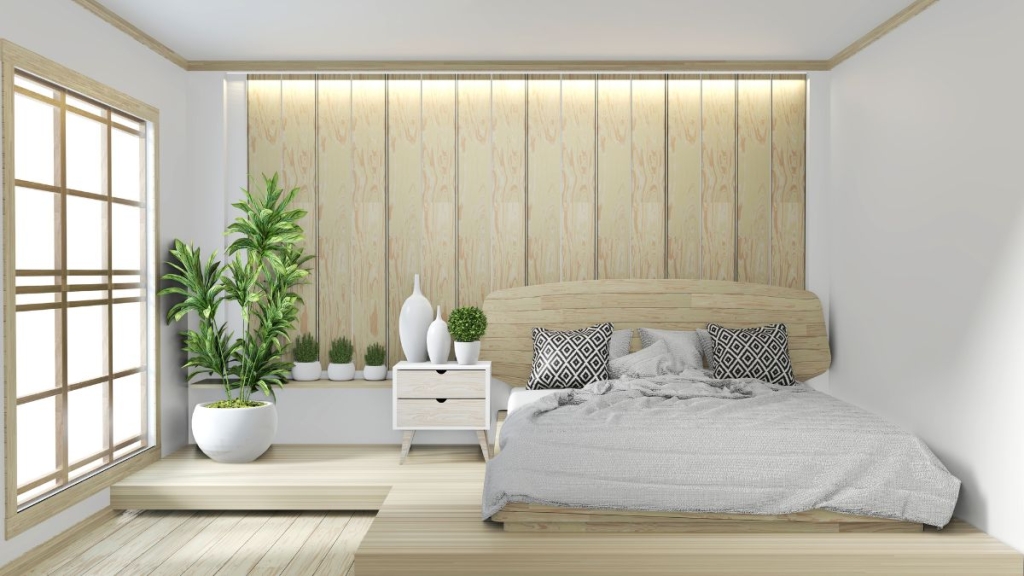
- Integration of environments: If possible, remove unnecessary walls or replace them with lightweight partitions and shoji doors, which allow light to pass through and create a subtle separation between spaces.
- Strategic mirrors: Use mirrors to reflect light and create the illusion of depth, visually expanding the room.
3. Functional and Discreet Furniture
Japanese-style furniture is designed to be functional without taking up too much space. Low furniture, such as tea tables and futons, is popular because it allows the space to remain open and airy.
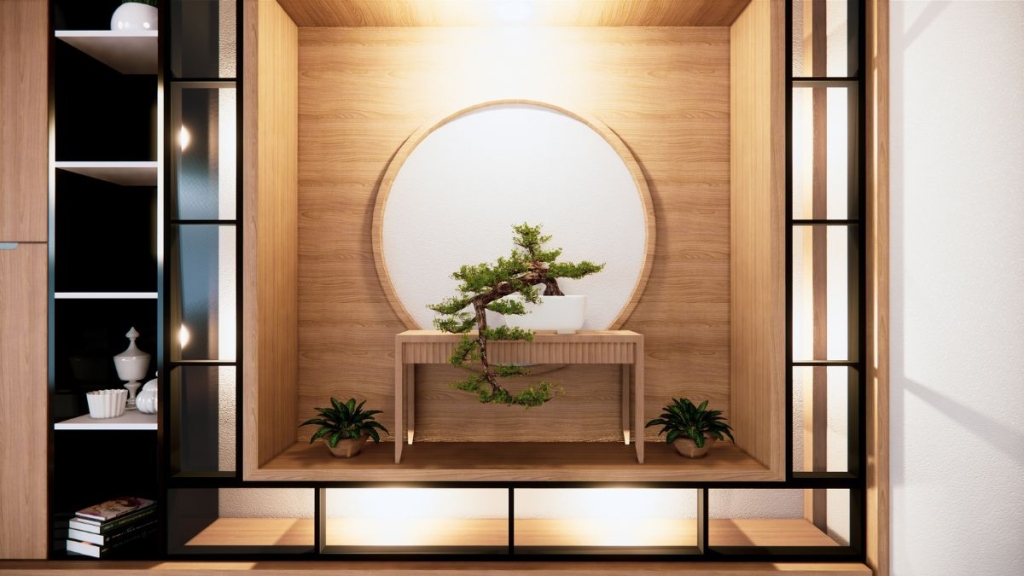
- Multifunctional furniture: Invest in pieces that can have more than one use, such as beds that transform into sofas or tables that fold away when not in use.
- Light lines and light colors: Choose furniture with simple lines and neutral colored fabrics, which help maintain the visual continuity of the space.
4. Connection with Nature
Nature plays a central role in Japanese lifestyle, and this is reflected in the décor. Natural materials such as wood, bamboo and tatami are used to create an environment that is both modern and timeless.
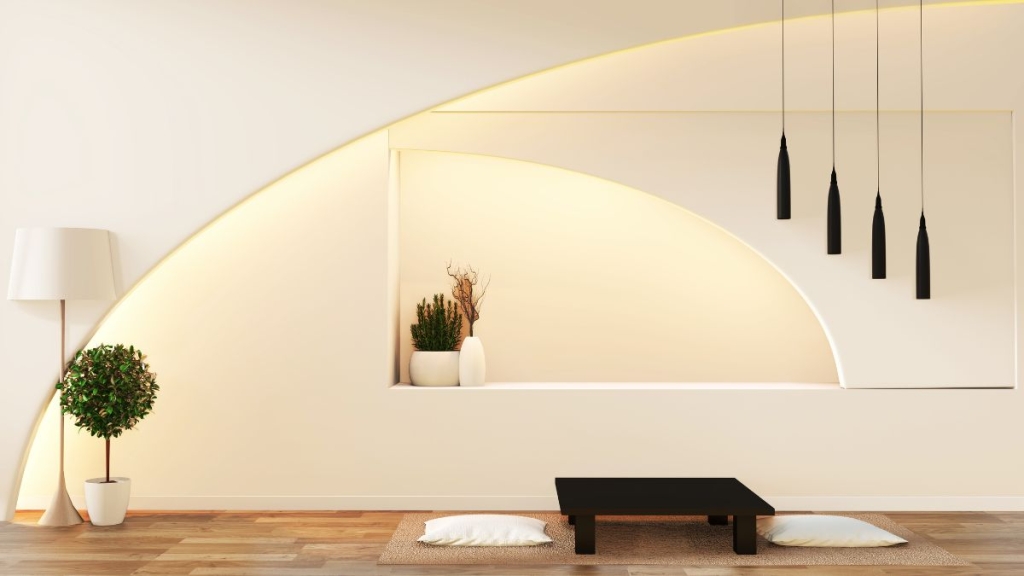
- Natural elements: Incorporate plants, stones and water into your decor to bring the feeling of the outdoors indoors. A small Zen garden or an ikebana arrangement can be the perfect touch to complete the ambience.
- Organic materials: Use materials like silk, rice paper, and rice straw rugs to create textures that add depth and warmth to the space.
5. Soft and Neutral Color Palette
Colors play a vital role in creating a calm and balanced environment. In the Japanese style, the color palette tends to be neutral, with an emphasis on soft tones that promote a sense of calm.
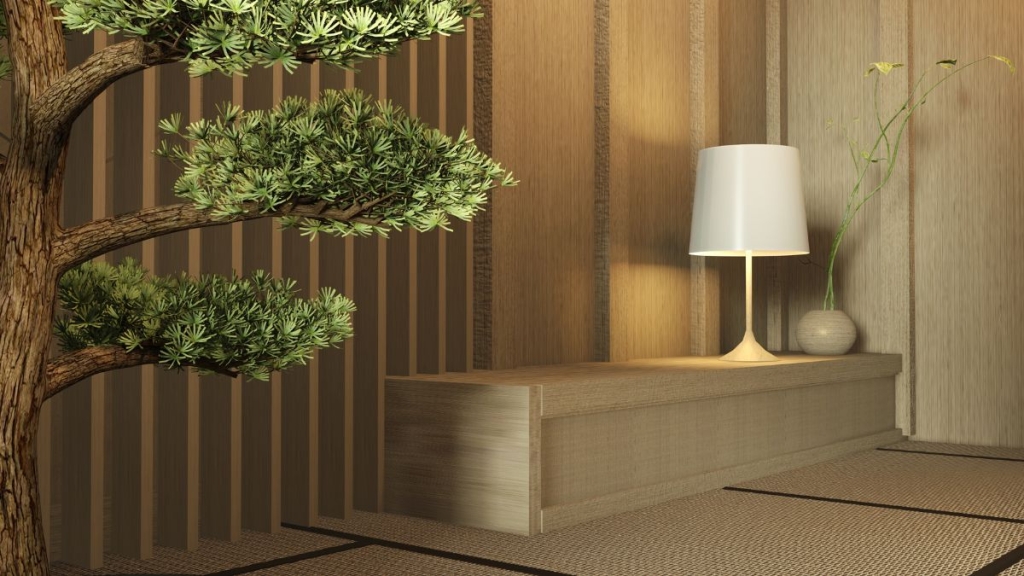
- Earthy and neutral tones: Choose colors like cream, gray, beige, and natural wood tones. These tones help create a cohesive and relaxing environment.
- Touches of color: To add personality, use color accents like red, green or blue in small doses, through pillows, art or small decorative objects.
6. Soft and Natural Lighting
Japanese-style lighting is soft and welcoming, designed to create a relaxing environment without overwhelming the senses. Natural light is emphasized, and artificial lighting is used in a subtle way.
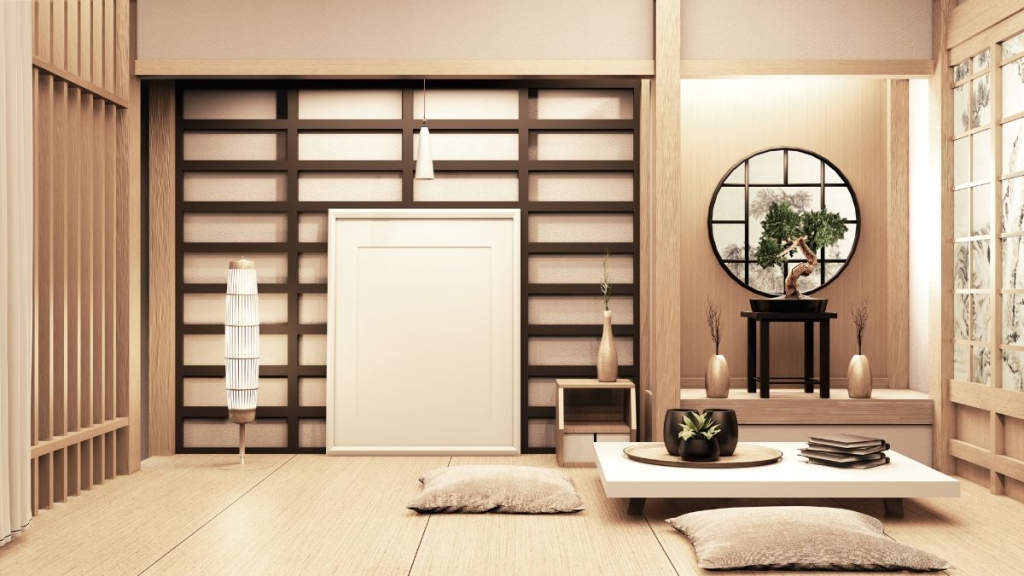
- Paper lamps: Lamps made from rice paper are a traditional choice that diffuse light softly, creating a calming atmosphere.
- Candles and lanterns: Add candles and lanterns to bring a warm, welcoming light to the space, especially at night.
7. Personalization and Simplicity
Despite its minimalism, the Japanese style doesn’t mean your space has to be impersonal. Personalize your space with items that have meaning to you but that integrate harmoniously with the design.
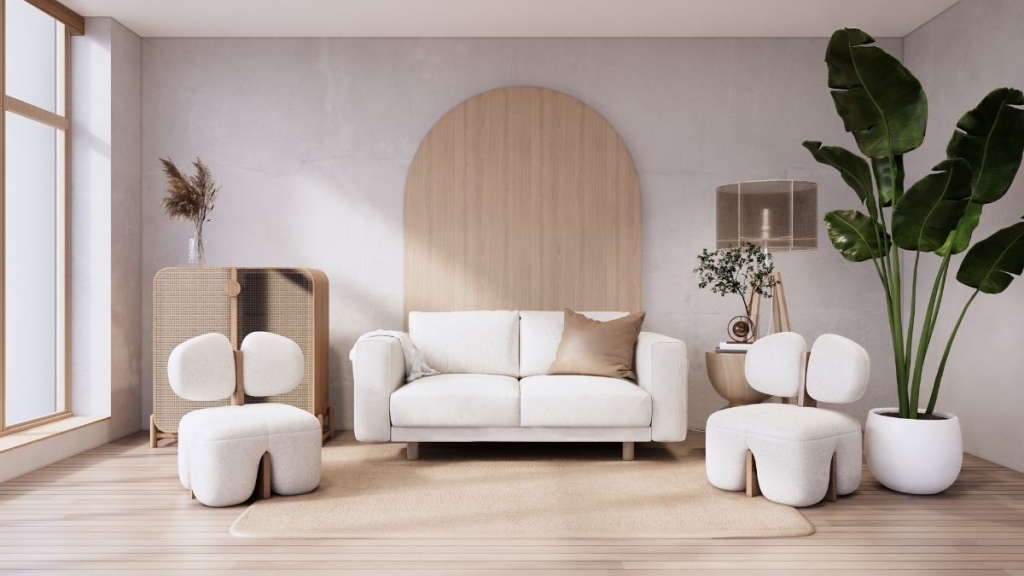
- Art and culture: Include elements of Japanese culture, such as calligraphy, traditional paintings or sculptures, to give your space an authentic and unique feel.
- Personal touches: Framed photographs, favorite books and travel souvenirs can be incorporated subtly, without breaking the harmony of the space.
Conclusion
Adopting the Japanese style of decorating can be transformative, especially in small apartments. This approach not only improves the aesthetics of your space, but also creates an environment that promotes well-being and tranquility. With these tips, you can create an apartment that is at once functional, beautiful, and full of personality.
Frequently Asked Questions
How can Japanese style optimize small spaces?
The Japanese style uses minimalism, strategic organization and the choice of multifunctional furniture to maximize every inch of space, creating a feeling of spaciousness and fluidity.
What materials are characteristic of the Japanese style?
Natural materials such as wood, bamboo, tatami and rice paper are essential to create the authentic and serene atmosphere typical of Japanese homes.
What colors are ideal for a Japanese-inspired environment?
Neutral and earthy tones such as cream, beige, gray, and natural wood are ideal for creating a calm and cohesive environment. Color accents can be added in moderation.
How can I incorporate elements of nature into Japanese decor?
Add plants, ikebana arrangements, small zen gardens, and use natural materials like wood and stone to bring nature indoors.
Is it possible to apply the Japanese style to rented apartments?
Yes, the Japanese style can be easily adapted to rented apartments with simple changes in decor, such as choosing furniture and accessories that follow minimalist and natural design principles.
Did you like this amazing tip? If so, share it with your friends and on your social networks. Leave your comment below and your suggestions. Receive it daily here on our website. Blog of ideas and tips free and follow us on Google News too. Thank you!